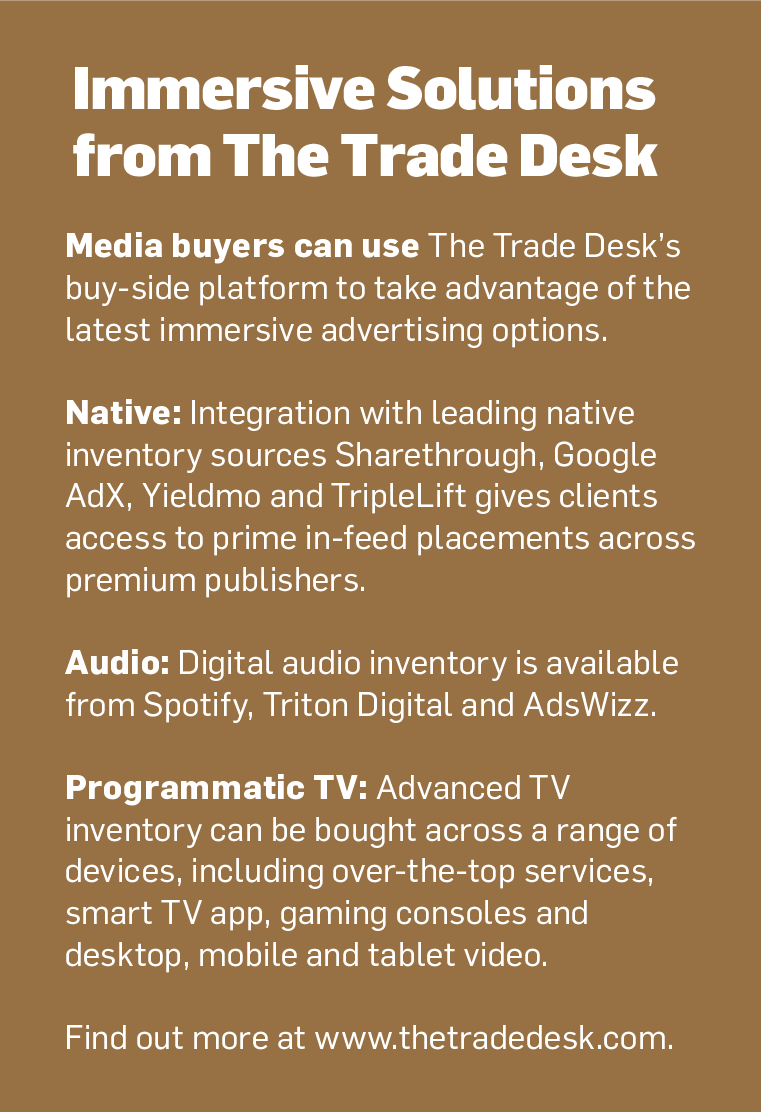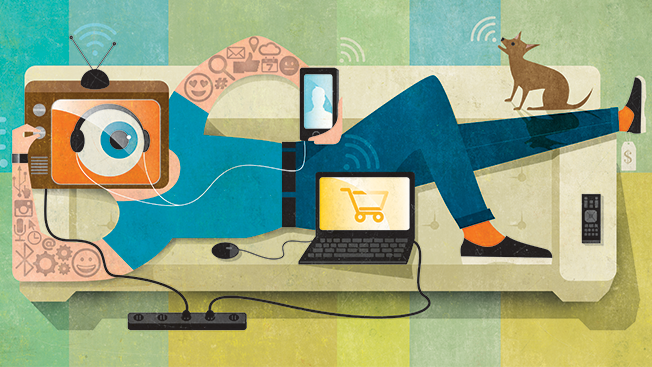Years of being bombarded with irrelevant marketing has made one thing clear: Ads are more meaningful when tailored to consumer interests.
Think back to the last decade. If you were reading your favorite news site in, say, 2007, advertisers were trying to grab your attention with a pop-up or flashing banner ad that caused you to stop what you were doing to look at it. Amazingly, that’s still a media strategy for some advertisers, but interruptive display has become increasingly unpleasant for consumers and ineffective for brands.
Fortunately, irrelevant ads are marching into obscurity. The rise of new formats such as native, audio and advanced TV allows brands to reach consumers in ways that tie in seamlessly with what they’re already doing. This new breed of context-driven advertising actually improves the user’s experience rather than distracting from it. Further, by implementing programmatic tools, marketers can reach unique audiences with ad messaging that is more relevant than ever before.
Here’s how brands are detracting the ad distraction:
Native makes us better off
More than anything else, native advertising has precipitated the shift toward immersive advertising. After all, by its very definition the format “follows the natural form and function of the user experience.”
As recently as five years ago, the concept of “sponsored content” was alien to many marketers. But social networks like Facebook and Twitter have made native advertising increasingly mainstream for today’s internet users. The success of native is directly related to how it enables marketers to deliver informative, content-focused ads at scale. Native doesn’t disrupt the consumer experience. Instead, it presents content, information or promotions within the context of the platform or website the user is browsing. The ad fits seamlessly into the user experience and they have the choice whether or not to engage with it.
Considering native is more organic and less disruptive, it is more palatable to consumers and effective for marketers. According to a study from Sharethrough and IPG Media Lab, people are over 50 percent more likely to pay attention to a native ad than a banner ad, with native driving greater brand affinity and purchase intent. It’s no wonder that U.S. native ad revenues will top $16 billion this year, per BI Intelligence, doubling to $33.5 billion by 2020.
It may seem counterintuitive, but native campaigns are increasingly being bought and sold via programmatic. These solutions marry the impact of native with the efficiency of exchange-based ad buying and the targeting capabilities available to buyers through DSP platforms.

Audio ads get sound results
Online marketers are also using programmatic targeting tools to bring old-school TV and radio advertising into the digital age. For example, Spotify recently made its streaming music inventory available for programmatic buying, allowing brands to target users based on attributes such as age, listening habits, location and gender.
Music is attached to almost everything consumers do. Audio connects and carries mood, memories and action. This emotive quality, coupled with its position as a permanent fixture in various consumer habits, makes audio a prime opportunity to serve ads that present products as a vital part of those routines or moments.
With the proliferation of smartphones, streaming audio allows people to take on-demand music and podcasts with them wherever they go, whether they’re commuting to work, driving to the grocery store or running through the park. This gives marketers a unique opportunity to join their audience on their daily routines and reach consumers without interrupting their day.
This kind of contextual advertising also provides advertisers with a rich data set. These insights ensure ads are relevant to the user at the moment they’re heard. For example, a fast-food chain can target a user listening to a morning “rise and grind” playlist with an ad suggesting they stop by a location they’re traveling past for a free coffee.
Keep viewers glued to their couches
Meanwhile, programmatic TV is turning one of the most interruptive advertising mediums into one that encourages viewers to stick around through the commercial breaks.
In the past, everyone watching a TV show in a certain geographic region saw the same ad. Brands have been dependent on Nielsen ratings to determine the audience’s demographics, but these segments are often so broad that most viewers seeing ads aren’t part of the target and would never even consider purchasing.
With the emerging technology of programmatic TV, brands are able to layer on their own data to find shows that are being watched by more precise groups of people. This way, they can ensure that a larger percentage of the people watching an ad for, say, a minivan are actually families in the market for a new vehicle.
Though the programmatic TV market is in its infancy, it’s expected to grow into a $17 billion category worldwide by 2019, according to IDC. As this technology continues to develop, marketers will only become more capable of engaging TV viewers with ads that truly speak to their needs as consumers.
Digital’s immersive future
Across the board, digital media is shifting to a model where successful advertisers are those that deliver their message in a way that feels natural and organic to the user experience.
As the era of immersive advertising gains momentum, brands and agencies must begin thinking about how they can use developing formats, platforms and targeting tools to weave their storytelling into the various routines and activities their consumers participate in. They can either create relevant, engrossing ad experiences that people want to spend time with, or watch as consumers migrate toward those provided by their rivals.
Ultimately, if you subscribe to the doctrine that all media is shifting to digital and all digital media will be bought and sold programmatically, then it is an exciting future for immersive advertising. It’s time to make irrelevant, interruptive banners a thing of the past.








